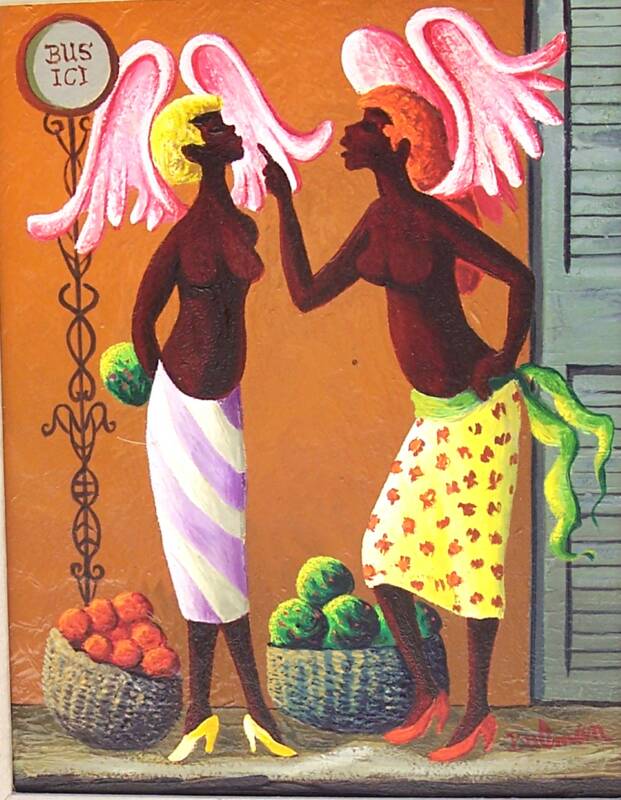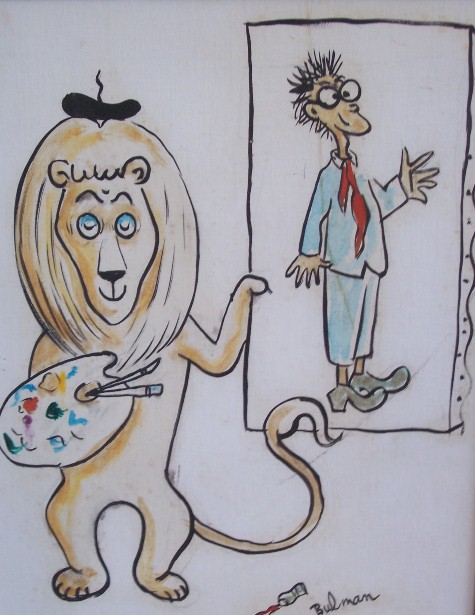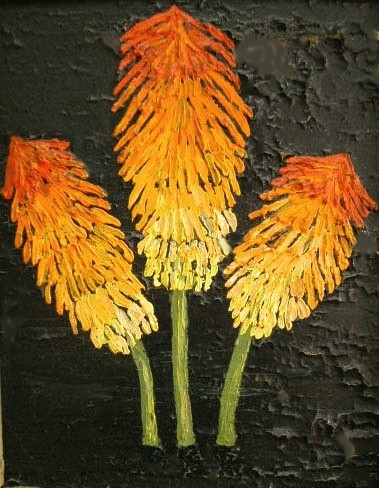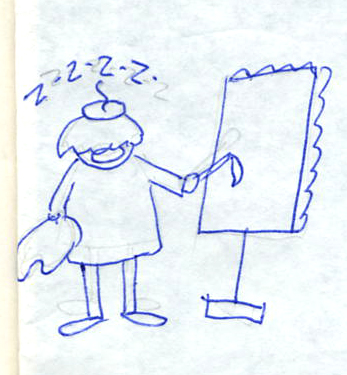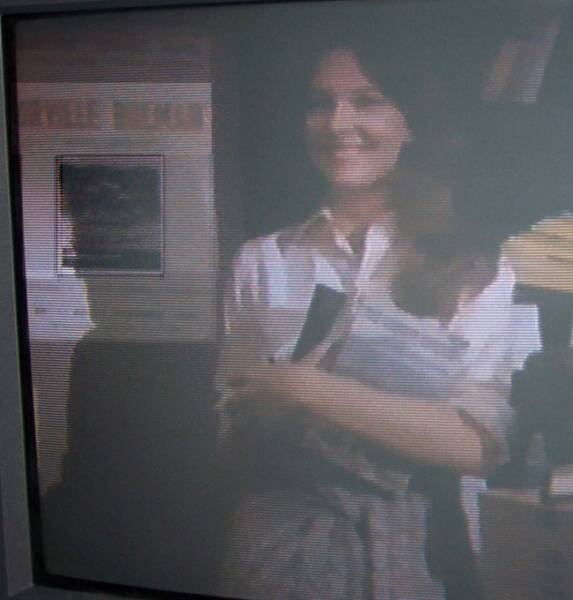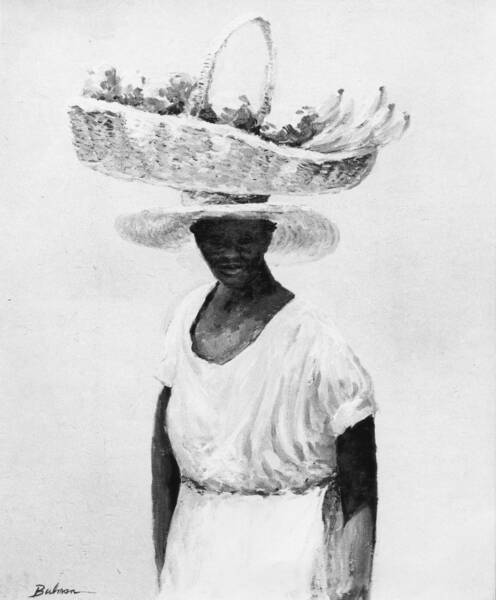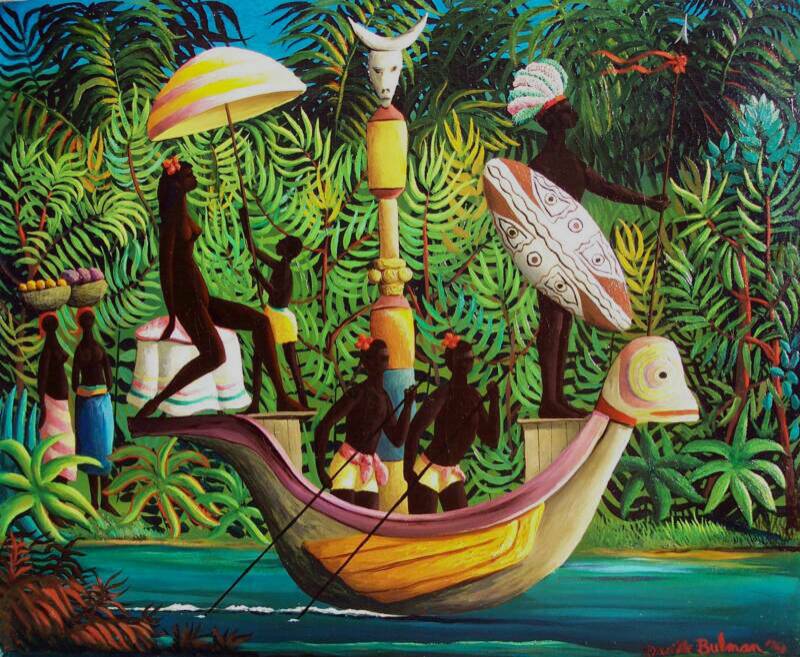Orville Bulman Rumor Control Center
Beauty is truth, truth beauty- That is all ye know on earth and all ye need to know. From Ode on a Grecian Urn by John Keats (1785-1821).
In an effort to control rumors, myths and untruths about Orville Bulman and to establish the basis of his enduring legacy, it is necessary to debunk any misinformation about the artist. All of these rumors are without any basis in fact, some are laughable, some benign (deriving from ignorance of the artist's life), but a few may be merely malicious and selfish attempts to compromise, diminish and defraud the art and life of Bulman because of the perpetrators' ulterior motives. As the representatives of the Bulman family and the Bulman estate, we must expose these libelous rumors and thwart any falsehoods about his distinguished career and purpose in life. In today's world of tabloid journalism and misinformation quickly dispersing over the Internet we, considered to be the only recognized experts of Bulman's work, must protect his reputation and elucidate the truth as quickly as possible.
1. Bulman was not merely a wealthy man pretending to be an artist (one inaccuracy of the many glaring errors in an old exhibition catalogue), nor did he have an "assembly line." Not only is this untrue, it is ridiculous. Bulman's passion was painting. "Painting is my life," he said. He spent copious amounts of time creating his art, completing every painting himself. He would work alone in his studio, eight to ten hours a day, especially if he was getting ready for a show. So concentrated was he, and so intent on his particular creation, that visitors dared not disturb his work, until, of course, he broke for lunch! He taught various women who copied his works, but Bulman never sold them as his own. Bulman also cared very much about other artists and art museums. He and his wife donated all the proceeds of his works to artists and art museums. The Grand Rapids Art Museum was able to buy a Picasso painting because of Bulman's generosity. The Orville and Jean Bulman foundation continues to support worthy organizations in Grand Rapids and Palm Beach County.
2. Bulman never adopted a tiger who turned on him. We don't know how this one started, but it never happened. In an interview in the late 1960s he stated that he didn't even see a tiger at the zoo until he was a middle aged man.
3. Art criticism of Bulman works (aside from the glowing reviews of the monograph of his work by esteemed art critics such as Sylvia Krissoff) includes a complimentary, extensive 2005 article written by Gary Schwan of the Palm Beach Post, entitled Orville Bulman: A Colorful Character, As long as there are enlightened art critics who thoroughly research Bulman's life, work and humanity, his brilliant legacy of fantastic paintings and inspirational generosity will endure. The official Orville Bulman web site does not deem sensationalist, tabloid journalism, however, worthy of comment.
4. It was the Haitians' sense of humor and tremendous appreciation of his art that inspired and encouraged Bulman to develop into the artist he was to become. He did not consider them beneath him (as was inaccurately written in an old exhibition catalogue); he considered himself to be a part of their village (calling it "our village.") He liked and respected the Haitians very much and they liked him - it's all in his personal letters to his wife Jean. The women of the island fascinated Bulman. He admired them, thought they were remarkably elegant and graceful, and wrote about them in glowing terms: "The way they ride their tiny burriques - no duchess in all history every rode a charger more magnificently." Also, the reason Bulman paints just a slight hint of features on the people of color in his art is because he knew he wasn't a master of painting faces and realized that if he used the exaggerated features as he did for animals in his paintings, his islanders would look like caricatures, so he refrained from doing so. The Haitians told Bulman that his work did not make their people look bad as many artists did - especially Americans. Bulman argued in favor of their right to practice their religion--Voodoo--and appreciated and studied it at the National Museum of Haiti. One only needs to study his letters and/or read his biography to learn the truth.
5. Bulman's Outhouse paintings were of real outhouses, not his opinion of general Haitian architecture. This is yet another glaring inaccuracy in that old catalogue. On the contrary, Bulman admired Haitian architecture very much, according to personal letters he wrote to Jean. He painted numerous, stunning depictions of the Haitian buildings, each different from the other, and described them as "almost like little palaces," and "having..enchanting originality." Incidentally, the Duchess of Windsor owned one of his Outhouse paintings (see an example at right).Again, his outhouse paintings were of outhouses, nothing else.
6. Orville Bulman paintings are not only acquired by socialites (as was again erroneously written in an old exhibition catalogue). Countless people from all walks of life have collected Bulman paintings. People of many varied ethnic backgrounds enjoy and have owned his paintings simply because they realize he portrays the adults in an elegant, graceful fashion and his humor is gentle, without malice or prejudice. (See multicultural appreciation of Bulman paintings) Although celebrities, presidents, royalty and corporation magnates are fans of Bulman's work, his art if for all people. (Bulman fought to keep his prices low because he wanted everyone to be able to afford his paintings.) His successful, sold-out shows occurred not only in Palm Beach. They also took place in New York, Chicago, Beverly Hills, Cincinnati, Detroit, Knoxville, Aspen, Naples (Florida), Grand Rapids, Wilmington (Delaware), Atlanta, Madison (Wisconsin), the Bahamas, Paris, London, Germany, Spain, etc. Over 22,000 people visited one of his shows in New York. There are avid Bulman collectors throughout the United States and Europe, and the list of his admirers grows constantly.
7. Bulman's widow did not complete unfinished paintings by Bulman after he died so that she could sell them. Jean Bulman was very much an amateur artist, and painted much more crudely than Bulman, therefore, she couldn't possibly complete an unfinished Bulman painting even if she wanted to. She wouldn't sell any of Bulman's paintings because she couldn't bear to part with any of them, unfinished or finished. We know for a fact, she destroyed many of the unfinished works so that artists couldn't take advantage of a work started by Bulman that they could finish. Therein lies the evidence, and Jean certainly did not need to rely on proceeds from sales of Bulman paintings. When she passed away, all of Bulman's works in Jean's collection were found neatly stacked in her apartment.
8. A rumor that tried to start in September of 2005 concerned the ludicrous notion of an Orville Bulman painting being featured on the I Love Lucy show, a television series of the 1950s. As a matter of fact, the same tired story was used for two different paintings. Of course, this is highly unlikely. If anyone would feature a Bulman painting on their TV show it would have been the great Raymond Burr, Bulman's Los Angeles art dealer and star of Perry Mason. The truth is, among a Picasso poster in the film, Looking for Mr. Goodbar, there is a vintage 1959 Orville Bulman poster (not an actual painting) from a Paris exhibition.
9. The estate of Orville Bulman owns the copyright of every work by Orville Bulman. A law enacted in 1978 clearly states that the family of a mid twentieth century artist owns the copyright of that artist's output, not the owner of the particular work. Anyone who claims to own the copyright of any Bulman work of art just because they own or claim to own said work is inaccurate and should not be believed.
10. Bulman never planted a brush hair or human hair into the paint of the canvas to make it a secret way of determining authenticity. This malicious rumor that tried to start (but failed) in September of 2005 was perhaps the most bizarre one we have ever come across. It was so outlandish and inane, it would have been quite humorous if it wasn't such an effrontery to collectors of Orville Bulman's work as well as to the family of Orville Bulman. It was particularly offensive as it pathetically attempted to compromise and undermine scholarly research. Many authentic Bulman paintings (that have original exhibition labels or exhibition stamps on the stretcher or frame, and/or are pictured in the original Bulman one-man show catalogues or in the Bulman family photographs) are unequivocally devoid of any hair embedded in the paint, and several owned by Bulman's family have no hairs embedded in them as well. If Bulman ever left one or a few stray hairs from the brush in the paint it was purely an unconscious oversight. (Loose hairs fall off of brushes in many paintings by all artists, and sometimes they are accidentally left in the work.) Orville Bulman wrote a manuscript about painting in which he delved deeply into every single intimate aspect of his technique, along with a multitude of advice tips for artists, and he never mentioned this outrageous falsehood. This fictional and baseless nonsense for authenticating Bulman paintings should be avoided completely.
11. Deborah C. Pollack wrote the book: Orville Bulman: An Enchanted Life and Fantastic Legacy because of the joyous reaction to Orville Bulman's paintings people experienced while gazing upon them..There was such a positive feeling about his art from just about everyone she encountered that she felt his work should be compiled into a volume along with true anecdotes and critical acclaim of his remarkable and distinguished life and art. We invite you to visit A History of International Acclaim to see what knowledgeable critics and scholars have written about Bulman's art and life.
If anyone tries to demoralize or damage the legacy of Orville Bulman, please direct them to the Rumor Control Center at www.orvillebulman.com/rumors.html
or contact us at [email protected].
Unless otherwise noted, all of the above works are by Orville Bulman.
Juanita Bass is a great cook and a Bulman fan.
Painted by Jean Bulman
"The Distinguished Lawyer" (Separating Truth from Falsehood)
"A Mean Kid" (Detail)
Diane Keaton with Bulman poster, in
Looking for Mr. Goodbar.
Outhouse
Portrait of a Haitian Woman
Orville Bulman: A Colorful Character
A great article by renowned writer,
Gary Schwan
La Duchesse
